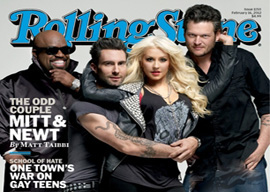
October 23, 2017

Source: Wikimedia Commons
I am sorry Tom Petty died. I truly am.
The outcry of hysteria upon his premature and tragic passing revealed that Tom Petty, a consistently likable B+/A– performer, personality, and songwriter, had somewhere along the way been promoted to the rank of superstar. Why did this happen? Tom Petty was good, and he has some great songs, but he was not one of the great men of rock & roll; he was one of the very good average men of rock & roll. Yet watching the way the world mourned, mewled, and rended their clothing upon his passing, you would have thought he was, like, the nazz.
The peculiar elevation of Petty to the level of legend reveals two important things: Americans simply don’t know enough about rock & roll, this beautiful and feral art form that echoes Storyville and Bed-Stuy and Manchester and Memphis and West Texas and West Africa; and secondly, we have been conned into thinking that rock & roll is dead, so therefore we must turn its mediocre princes into kings, we must grab on to aging driftwood, because we are on the Titanic, aren’t we?
The primary source of this con, the glossy but jaundiced terrarium of silliness where so many of these lies were watered and nurtured, was (and is) Rolling Stone magazine.
Recently, it was announced that Rolling Stone was very likely going to be sold. Bizarrely, this set off some kind of paroxysm of mourning and nostalgia. Much of this came from the kind of aging, balding men who wear blazers over T-shirts and whom you regret sitting next to on airplanes. But for me, hearing that Rolling Stone was being sold was like hearing that the Famous Famiglia pizza chain was being sold, because, basically, Rolling Stone is to rock & roll what airport pizza is to pizza.
Not only will I not miss Rolling Stone, I will celebrate its passing. Rolling Stone lied. It had its own concept of the story of rock & roll, and that notion was a pale chalk outline around the actual, useful, ecstatic reality. The death of Rolling Stone is not a symptom of the failing music industry; rather, the very existence of Rolling Stone was a factor in the failure of the music industry.
Rolling Stone was superficial, biased, incomplete, and inaccurate, yet it promoted itself as definitive, as some kind of essential text. This is the most offensive sort of bullshit. As a near-child, when hairs began to sprout out below and I recognized that sitcom and FM America was a lie, I scanned Rolling Stone for news that would set me free and would compel me to rush to the record store. I turned to Rolling Stone because I assumed that’s what people who were interested in music and the music culture were supposed to do. Almost immediately—and I was just 13 or 14—I knew I was being had.
See, on a very consistent basis (both a generation ago and today), Rolling Stone ignored anything that was too simple, too complicated, too arty, too loud, too quiet, too un-Beatle-y, too un-Paul Simon-y, or too British. Horrifyingly, this sensibility has been passed on to the Jann Wenner-dominated Rock & Roll Hall of Fame, which serially omits artists like Kraftwerk, Judas Priest, the Smiths, Kate Bush, Mott the Hoople, Iron Maiden, and others who have indisputably contributed to the commercial and artistic majesty of rock & roll.
I’ll give you another reason I won’t be mourning this soggy old rag: It gives you the idea that rock is dead. It’s convinced you that the whole animal—that wiry, lean, sexy, drooling electric satyr that has goosed you every day since you were 12—is gasping for breath, pawing at the hospice air with one desiccated, dry paw.
But nothing could be further from the truth.
The music industry may be dying, or at least bundled inside some chrysalis awaiting rebirth in another form, but music is alive and very well: I am talking about strange music and sweet music and music so quiet it makes you hear your feelings hum, and music so loud it makes your ears crispy and fills you with feral joy, and music so inventive it makes you believe that rock & roll has never been so vital. Let’s just talk about 2017: Jane Weaver, Sunflower Bean, Kaitlyn Aurelia Smith, Omni, Kosmischer Läufer, these artists prove that there is an amazing amount of new and vital music out there—and please note the new Russian guitar-based post-punk scene, which is like 1980 all over again, with bands like Lucidvox, Pinkshinyultrablast, and especially rw/Glintshake making some of the wildest, sparkiest, Escher-angled pop punk that’s ever been made.
You will read about virtually none of that if you read Rolling Stone, as they have been far, far too busy jacking off over pictures of Harry Styles and Ed Sheehan and Dave Grohl. They have convinced you that these pathetic walking pubic beards are the lone figures that will lead us by the hand into the dark apartment on the metaphorical Grand Concourse to sit shiva for rock & roll. But Rolling Stone’s idea that this claque of polite, glad-handing Grohls is all that’s out there is a total lie, and the idea that the whole genre is dead or dying is a hatful of lies.
No single force in our American rock and pop culture—not radio, not MTV, not Dick Clark, not even streaming and the death of the old-mode music economy—did more to hurt the life force of American rock & roll than Rolling Stone. That’s because it gave a woefully misleading picture of the culture, while claiming, essentially, to be the voice of the culture.